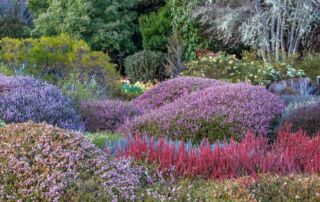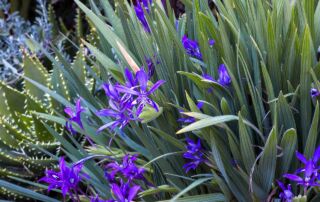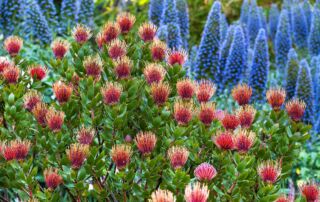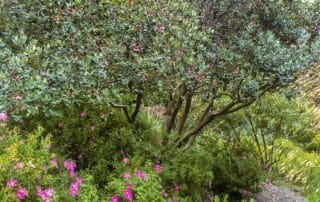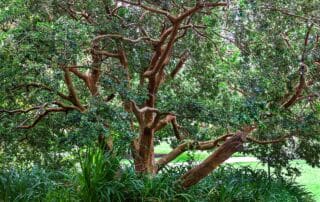Planning for Fire
Summer-dry climates are prone to wildfires. We love our hot, dry summers which, after wet winters, makes the vegetation tinder dry. Fires are in evitable and normal, and to live safely in this climate we have to plan for fire and hydrate our built landscape.
Ericas for Mild-Winter Summer-Dry Climates
So, your summers are reliably dry, warm to hot, and sometimes, if only briefly, scorching. Your winters are usually wet and chilly but sometimes, briefly, icy cold. Years of drought and winter downpours both are common. Your soil is partly or mostly clay. Can you
Babianas
Babianas are deciduous, mostly winter-growing, spring-blooming, bulblike perennials native to southern Africa. Best massed in the garden, these are diminutive plants with an outsized floral effect. Growing naturally on well-drained silts and clays, granite-derived gravels, and rocky or sandy slopes and flats, they need sun,
Leucospermums
Outside of South Africa, where almost all are endemic, leucospermums are best known for their otherworldly cut flowers. Gardeners in other mild-winter, summer-dry climates likely purchase the flowers without realizing that they might be able to grow them. Leucospermum 'Scarlet Ribbon' (L. glabrum x
Pineapple Guava
Pineapple guava may hold the record for the longest lasting resistance to a plant name change, a resistance recently rewarded with a reinstatement of the original name of Feijoa sellowiana. This evergreen, subtropical South American shrub or small tree was given that name in 1859,
Chilean Myrtle
Luma apiculata, sometimes known as Chilean myrtle, is a small to mid-sized, usually multitrunk or low-branching, evergreen tree. Leaves are small, leathery, dark green, and broadly oval with a short, acutely pointed tip. Bark is smooth and grayish tan, turning cinnamon brown with age and



